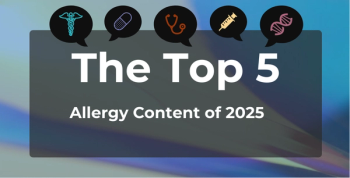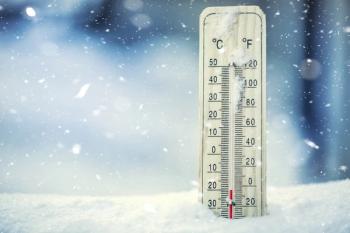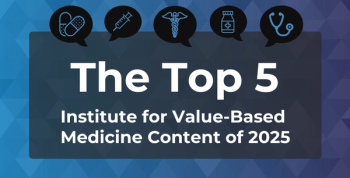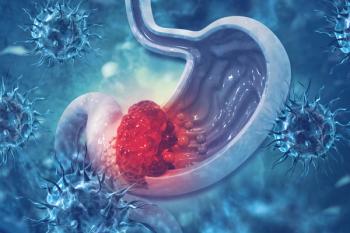
Environmental Risks Escalate Cardiovascular Disease Burden, Experts Warn
A joint session from the European Society of Cardiology and the World Heart Federation examined the impact of noise, climate change, and air pollution on cardiovascular disease.
The effects of noise, climate change, and air pollution—known risk factors for cardiovascular disease (CVD)—were explored in the joint session, “Environmental Health Concerns for Cardiologists,” from the European Society of Cardiology (ESC) and the World Heart Federation (WHF) at this year’s
“A very important topic, I think we’re all aware that environmental risk factors are becoming more and more important for cardiovascular disease,” said Franz Weidinger, MD, current president of the ESC and head of cardiology at Klinik Landstrasse at Vienna Medical University in Austria. “And this environmental risk is increasing over time.”
Annually, 1.6 million health life-years are lost in Europe from excessive noise levels, but there is potential to save 110,000 lives per year to keeping noise levels below 55 decibels.
With his cochair, WHF president-elect Jagat Narula, MD, PhD, MACC, MASNC, executive vice president and chief academic officer at the University of Texas Health Science Center at Houston, they welcomed Thomas Münzel, MD, University Medical Center at Johannes Gutenberg University Mainz, Germany; Dorairaj Prabhakaran, MD, DM (Cardiology), MSc, FRCP, FNASc, FNA, Center for Chronic Disease Control and Public Health Foundation of India; and and Andreas Daiber, PhD, University Medical Center, Mainz.
The Cardiovascular Consequences of Noise1
Münzel began by addressing the global burden of disease from transportation noise, with the World Health Organization noting it is “the most underrated environmental risk factor and the second most important environmental reason for health problems,” and the European Environment Agency putting up some scary numbers: 900,000 cases of hypertension; 43,000 hospital admissions; 6.5 million cases of high sleep disturbance; and 22 million cases of chronic high annoyance due to excessive noise levels
Directly, there is hearing loss and indirectly, communication and sleep disturbances are affected by excessively loud noise exposure. But how exactly does noise lead to cardiovascular disease, Münzel asked the audience? Stress levels rise from annoyance and anger, activating a neurohormonal cascade that involves the hypothalamus and release of corticotropin-releasing hormone, the adrenal glands and kidneys, and eventual release of glucocorticoids and catecholamines that trigger activation of the renin-angiotensin-aldosterone system RAAS activation—all which lead to vasoconstriction, inflammation, and oxidative stress on blood vessels.
“Chronic stress promotes formation of own risk factors,” he noted. Blood pressure, glucose levels, and cholesterol levels are all known to rise, with initial dysfunction seen in endothelial cells. Recent research points to a 3.2% greater risk of a CVD diagnosis for every 10 decibels of higher road traffic noise, with especial higher risks seen for ischemic heart disease, hypertension, arrhythmia, stroke, and heart failure.2 Other studies show that combined exposure (road, railway, aircraft)—when comparing no traffic noise exposure to 1, 2, or 3 noise sources—impart an especially harsh effect, with increasing HRs form ischemic heart disease, myocardial infarction, and heart failure,3 and that 3-NT and 8-isoprostane levels, both markers of airway oxidative stress, rise with repeat exposure to excessive aircraft and railway noise.4,5
Nighttime noise from aircraft exposure, can be especially damaging, Münzel explained, due to a significant increase in blood pressure.
Potential infrastructure solutions include noise barriers, traffic management, land-use planning and design, quieter road surfaces, and night curfews for aircraft, all of which can help to reduce decibel levels, and among humans, NOX-2 knockout and endothelial EMP kinase activation can facilitate CVD damage prevention and effects of noise mitigation.
“We propose that inflammatory cells play an important role,” he said. “We have to communicate the importance and significant impact of including environmental noise as a risk factor in clinical guidelines and encourage cardiologists to modify their daily clinical practice concerning the assessment of CV risk factors.”
The Cardiovascular Consequences of Climate Change6
To kick off his discussion, Prabhakaran presented several upsetting facts about the relationship between climate change and CV health.
For example, temperature fluctuations are known to affect CVD mortality; higher risks are seen with both extreme heat and extreme cold, with approximately 93,000 global CVD deaths resulting from climate change7; and for every 1°C/33.8°F, there is a known 2.1% increase in CVD mortality. These risks, too, only go up in certain groups: individuals 65 years and older, those with preexisting conditions (eg, hypertension, diabetes, hyperlipidemia, and coronary artery disease), and people who live in economically disadvantages areas.
Contributing to this climate change burden are floods, droughts, and power outages that increase the burden of both CVD and its complications from global warming, heat events, and air pollution, Prabhakaran explained. And this effect is not uniform. Living below the poverty line and being unemployed can contribute to this burden, because these individuals face an even greater lack of access to healthy food and clean water, adequate housing and transportation, and health care; more disruptions to their mental health; and higher rates of food- and water-borne illnesses as indirect effects of climate change that can exacerbate untreated CVD.
The pathophysiological pathways differ for CVD when considering hot and cold temperatures. With hot temperatures, thrombosis and tachycardia are more likely, atherosclerotic plaque can rupture, fluid depletion and electrolyte imbalances occur, and peripheral vasodilation and sweat evaporation are sped up. With cold temperatures, blood levels are more likely to rise due to peripheral vasoconstriction, cholesterol crystal deposits increase, and skeletal muscle tone changes.8
Further, excessive exposure to particulate matter 2.5 (PM2.5) and 10 (PM10) can lead to endothelial cell damage that triggers hypertension and atherosclerosis, direct heart damage resulting in arrhythmias and heart failure, and inflammation that can spur insulin resistance, diabetes, and obesity. Overall, air pollution had also been implicated in dysglycemia, dyslipidemia, acute coronary syndrome, and coronary heart disease.
“There is that relationship between air pollution and several CVDs, and there is a relationship between temperature and mortality,” Prabhakaran explained.
Experts need to pay greater attention to and increase their understanding of the influence of syndemics—when 2 or more health conditions occur simultaneously—resulting from climate change, particularly infectious and noncommunicable diseases, to formulate targeted strategies that can effectively target the complex health challenges patients with CVD face.
The Cardiovascular Consequences of Air Pollution9
“Air pollution is the leading chemical pollution risk factor [for global mortality], far ahead of water pollution and soil pollution,” Daiber began. “And air pollution alone contributes 8 million premature deaths per year to the global burden of disease.”
The only risk factor that kills more people than air pollution is hypertension, he emphasized.10 Overall, most deaths from cardiovascular causes can be found in Asia (China and India, specifically), where PM2.5 exposure led to 3.06 million excess CVD-related deaths in 2023 compared with 484,000 and 135,000 in Europe and North American, respectively.11 In addition, research shows 790,000 annual excess deaths from ambient air pollution, with 40% of these attributable to patients who have ischemic heart disease, 6% to patients who have chronic obstructive pulmonary disease, and 4% who have stroke.12
Meta-analyses further drive home the impact of PM2.5 exposure as a driver behind CVD. Per 10 μg/m3 increase in long-term fine particulate matter exposure, research shows sizable increases in mortality from ischemic heart disease and incident acute myocardial infarction; a 24% (95% CI, 1.13-1.36) greater risk of cerebrovascular-related mortality; and a 13% (95% CI, 1.11-1.15) greater risk of incident stroke.13 In atherosclerosis, he continued, patients have higher risk of plaque rupture with more exposure, with certain conditions driving this risk up even more: older age, prior CV or pulmonary disease, obesity, diabetes, chronic kidney disease, organ transplant, and immunosuppression.
“These are really worrisome numbers,” Daiber underscored. PM2.5 exposure is especially dangerous because of its size—nano particles more easily reach the blood stream and can cross the blood-brain barrier and cause organ damage vs fine particles—chemical composition, as these particles typically have a carbon or mineral core, but are loaded with toxic surface chemicals; and photoaging, he added.
As Prabhakaran did, Daiber stressed the need for risk models that account for multiple exposures (eg, noise, air, and light pollution), because these produce a higher cumulative risk of CVD, adding that decreasing legal air pollution exposure limits should also be investigated.
References
1.Münzel T. The cardiovascular consequences of noise. Presented at: ESC Congress; August 30-September 2, 2024; London, England.
2. Münzel T, Molitor M, Kuntic M, et al. Transportation noise pollution and cardiovascular health. Circ Res. 2024;134(9):1113-1135. doi:10.1161/CIRCRESAHA.123.323584
3. Thatcher JD, Poulsen AH, Raaschou-Nielsen O, et al. Exposure to transportation noise and risk for cardiovascular disease in a nationwide cohort study from Denmark. Environ Res. 2022;211:113106. doi:10.1016/j.envres.2022.113106
4. Schmidt FP, Basner M, Kröger G, et al. Effect of nighttime aircraft noise exposure on endothelial function and stress hormone release in healthy adults. Eur Heart J. 2013:34(45):3508-3514. doi:10.1093/eurheartj/eht269
5. Herzog J, Schmidt FP, Hadad O, at al. Acute exposure to nocturnal train noise induces endothelial dysfunction and pro-thromboinflammatory changes of the plasma proteome in healthy subjects. Basic Res Cardiol. 2019;114(6):46. doi:10.1007/s00395-019-0753-y
6. Prabhakaran D. The cardiovascular consequences of climate change. Presented at: ESC Congress; August 30-September 2, 2024; London, England.
7. Global Burden of Disease Study 2019. Institute for Health Metrics and Evaluation. Accessed August 31, 2024. https://ghdx.healthdata.org/gbd-2019
8. Khraishah H, Alahmad B, Ostergard Jr RL, et al. Climate change and cardiovascular disease: implications for global health 2022. Nat Rev Cardiol. 2022;19(12):798-812. doi:10.1038/s41569-022-00720-x
9. Daiber A. Air pollution and cardiovascular disease. Presented at: ESC Congress; August 30-September 2, 2024; London, England.
10. State of global air report 2024: a special report on global exposure to air pollution and its health impacts, especially on children. State of Global Air. Accessed August 31, 2024. https://www.stateofglobalair.org/resources/report/state-global-air-report-2024
11. Hahad O, Rajagopalan S, Lelieveld J, et al. Noise and air pollution as risk factors for hypertension: part I-epidemiology. Hypertension. 2023;80(7):1375-1383. doi:10.1161/HYPERTENSIONAHA.122.18732
12. Lelieveld J, Klingmüller K, Pozzer A, et al. Cardiovascular disease burden from ambient air pollution in Europe reassessed using novel hazard ratio functions. Eur Heart J. 2023;40(20):1590-1596. doi:10.1093/eurheartj/ehz135
13. Alexeef SE, Liao NS, LiuX, Van Den Eeden SK, Sidney S. et al. Long-term PM2.5 exposure and risks of ischemic heart disease and stroke events: review and meta-analysis. J Am Heart Assoc.2020;10(1):e016890. doi:10.1161/JAHA.120.016890
Newsletter
Stay ahead of policy, cost, and value—subscribe to AJMC for expert insights at the intersection of clinical care and health economics.







































